Vicky Smith on How the Media Coverage of Catherine Spiraled out of the Palace’s Control
‘It has been frustrating as a royal journalist to see rumors given the same weight as facts.’
This much we know for certain: A lot of people have a lot of thoughts on the royal news of the last month. And while I do not subscribe to much of the noise online, I do think it’s important to consider a variety of informed voices on this complicated situation.
To that end, I asked two journalists — one from the UK, another from the US — to write guest essays reflecting on the events surrounding the Princess of Wales, from the conspiracy theories about Catherine to Kensington Palace’s response. I asked them to share their views on what happened, what we have learned, and what could have been done differently.
Below you will find the first of those pieces, from
of @ByVickySmith on Instagram. Vicky was a news and royal reporter for the British tabloid the Daily Mirror and is now a freelance journalist, covering news on Instagram as well as Substack (check out her newsletter: ).Throughout the last several weeks, I regularly sought out Vicky’s Stories for her read on, and insights into, the UK response (which, unsurprisingly, has some marked differences to the US take). Her essay looks with a skeptical eye at the online discourse, the mainstream media, and the palace’s PR strategy. She also explains the expectations of privacy for public figures in Britain, with great insight into the Windsor farm shop footage, and wonders what the palace could have done differently.
Thank you for your support of So Many Thoughts, which makes it possible for me to do this work and pay contributing writers! If you haven’t already, please consider upgrading for $5 / month.
Vicky Smith on How the Media Coverage of Catherine Spiraled out of the Palace’s Control
Vicky Smith worked as a news and royal reporter for the Daily Mirror. She is now a freelance journalist with her own weekly Substack offering a digest and analysis delving behind the headlines.
By
Sitting on a bench amid a sea of bright yellow daffodils — a symbol of hope for cancer sufferers — Catherine, the Princess of Wales gave an update on her health none of us were expecting.
A cancer diagnosis is always hard to deal with. But for a mother of three, aged just 42, whose father-in-law has recently been diagnosed with the disease as well, you can only imagine the family’s heartache over these last few weeks. The frenzy of vile “Where’s Kate?” conspiracy theories on social media, influencing the press agenda like the Pied Piper, must have only compounded the agony in this difficult time.
It has been frustrating as a royal journalist to see rumors given the same weight as facts and a request for patience ignored in favor of the unrelenting pursuit of clicks and views. William has always been fiercely protective of his family — an understandable stance given what he witnessed befall his mother. And yet, even with laws to protect their privacy, we have seen that protective shield torn to shreds these last few weeks. This has happened because although the royal family maintains influence over the press, and privacy laws keep the most salacious element in check, they cannot control social media.
Paddy Harverson, former spokesman for the Prince and Princess of Wales, had it right this week when he referred to the “doom loop” created by social media and the press feeding off each other.
“Unseemly rumors that have festered for years were dug up and given new life with gruesome twists and turns transforming them into conspiracy theories.”
Social media is addicted to trying to peek behind the veil into the private lives of the royal family, perhaps egged on by hit TV show The Crown, which has blurred the lines between fact and fiction.
The sudden withdrawal from public life by Catherine to undergo surgery, the ensuing silence with the occasional “she’s recovering well at home” statement and no photographs was too much for armchair detectives to resist. Unseemly rumors that have festered for years were dug up and given new life with gruesome twists and turns transforming them into conspiracy theories.
It’s worth noting that although many of the theories were shared on social media out of hate or a cynical attempt to gain engagement, some people jumped on the bandwagon in jest because the topic was trending. One high-profile example was actress Blake Lively. She has since apologized for a post she made referencing the online drama.
A lack of regulation means social media is the Wild West — and evidence has now emerged a Russian-based disinformation group amplified deplorable rumors.
Some of the media decided to follow rather than lead by example. Instead of remaining focused on the statement and timeline released in January, parts of the British press became obsessed with what conspiracy theorists on social media were saying — largely because the business model for online news is to write about what is trending. That doesn’t necessarily correlate with good journalism. And, frustratingly, it also doesn’t necessarily correlate with what the vast majority of the public believes. One poll found most people had seen conspiracy theories online but trust in the royals remained the same.
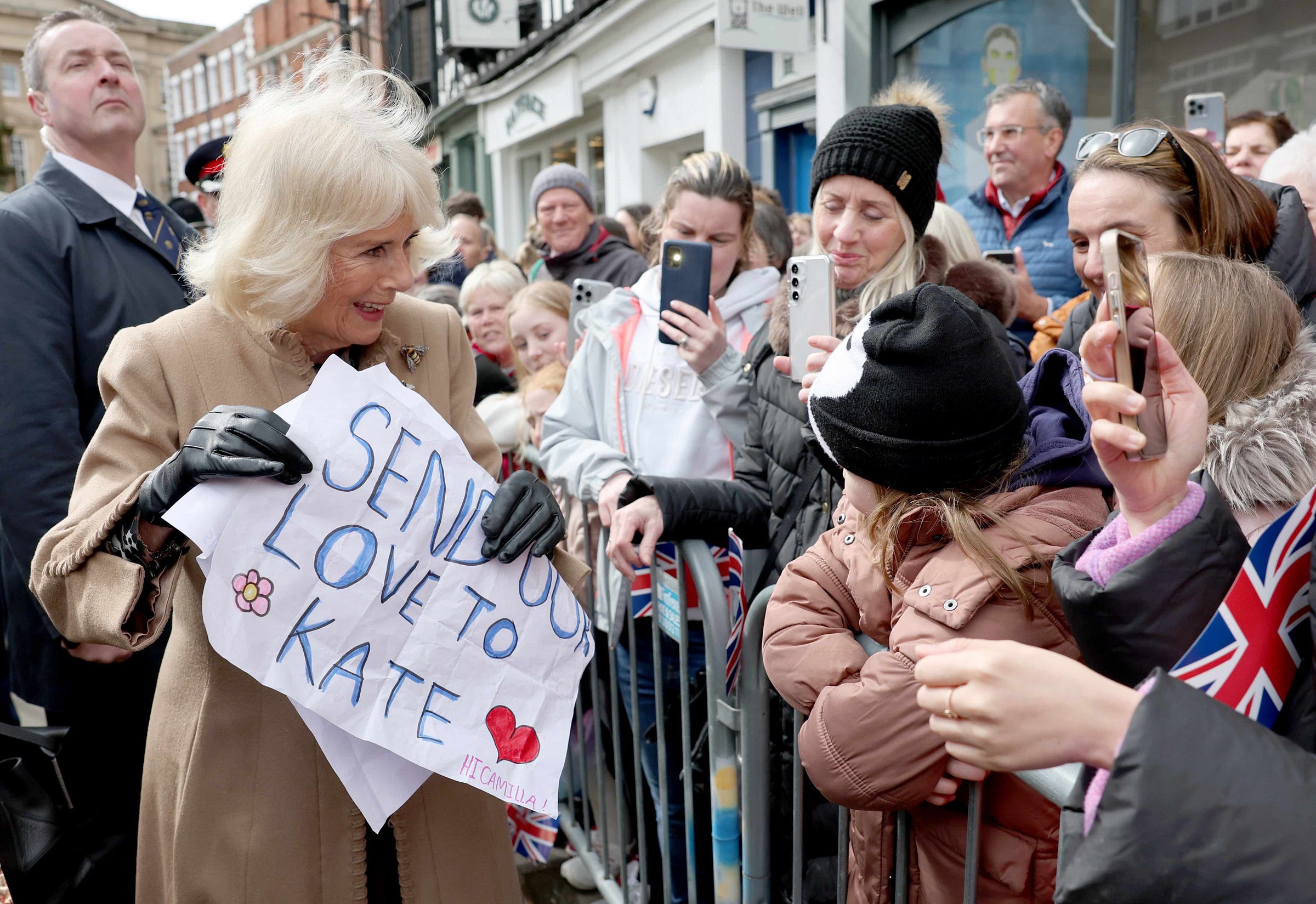
Even though headlines appealed for people to “Leave Kate alone,” the validation of being heard made social media gossip all the more compelling.
The US media and individuals such as Stephen Colbert went much further in repeating rumors than any British news organization would, due to libel and privacy laws. Colbert has attempted to make amends for his jokes at Kate’s expense, although like others he still hasn’t grasped the truth that Kate never “disappeared,” she was always at home recovering from surgery.
That’s not to say the media had no valid questions. The edited Mother’s Day photograph, subsequently withdrawn by several internationally respected picture agencies, was a misstep. As a keen photographer, Catherine has taken great pride in releasing her own images to mark important events. I recall a royal aide telling me this plan in 2013, just weeks after Prince George was born, after I asked when we could expect the first portrait. At the time I thought it was a lovely idea. I still do; it’s a modern take on tradition.
However, had that same aide suggested the image may be edited heavily to get the composition right, I would have told him this was a terrible idea. Pictures for news must be accurate. Edits to the layout are not acceptable because they create an inaccurate account of a moment in time. It can be seen as dishonest.
We have all seen the consequences of that play out before us these last few weeks. Instead of laying rumors to rest, it poured fuel on the fire. Catherine’s statement apologizing for the confusion around the photograph — which we know from the metadata went through Photoshop twice before it was released — did little to quell what was by then a tornado of disinformation.
“Everyone, regardless of their title or station, has a right to a private life, even if their job thrusts them into the public eye.”
At the heart of what’s happened is the question of privacy, and who has the right to privacy. It’s a tricky subject, especially if you are a future queen and mother to a future king. According to British law, everyone has the right to a private life under article 8 of the European Convention on Human Rights — even a princess. This is the same law the Duchess of Sussex relied upon to win her case against the Daily Mail regarding publication of her letter to her father. It means that everyone, regardless of their title or station, has a right to a private life, even if their job thrusts them into the public eye. And even if something about a well-known figure may be interesting to the public, this does not make it in the public interest to publish.
But it does get a little murky for the publicly funded royal family when you bring public interest into the conversation. The line between private life and public interest moves depending on the situation and is even open to interpretation. This has led to additional confusion and — surprise, surprise — more conspiracy theories.
Take the grainy footage of William and Kate visiting Windsor Farm Shop in Berkshire. We don’t know the precise thinking behind the palace’s decision to not to kick up a fuss over it, a situation where they did have a reasonable expectation of privacy. This may seem strange, given the couple were not behind the walls of their home, but walking alongside members of the public. British privacy laws mean an individual, however famous they may be or whatever their important role may be, has a right to a private life, even as they go about that in a public place.
Once the Prince and Princess of Wales end their royal duties for the day, and become simply William and Catherine, they have a right to privacy. Even if the general public spots them as they go about this “normal life” away from royal engagements. One minute they could be shaking hands with dignitaries under the full glare of the world’s media. The next they could be at the grocery store, where the line drawn by privacy laws clearly states they have the right to do so without a pack of cameras following them.
British media are bound under these laws and, following extensive discussions between editors and palace officials in the wake of Diana’s death, do not create a market for this type of photography. They will not buy them even if they do exist. That doesn’t mean they do not get shared on social media, or in foreign publications, but it affords the royal family some protection in their own country. There will, of course, occasionally be exceptions to this, and moments where tabloids may try their luck.
We do know that Victoria Newton, the editor of The Sun newspaper, where the video first appeared before being syndicated to other British press, was in contact with the palace over the footage. The paper was clearly confident it would not be dragged into court for violating the couple’s privacy.
This does not mean that the palace authorized or plotted this footage, although the couple benefited from the effort to dispel myths. Every publicly available fact points to it being shot by a member of the public who happened to see William and Kate there.
Of course, we can safely assume they would have known there was a high probability they would be photographed at the farm shop. But what was really key to the British press’s confidence in publishing these images despite potential legal worries was the timing.
Just weeks earlier, the British press avoided the paparazzi shot of Catherine being driven by her mother Carole Middleton in Windsor. The edited family photo, released on Mother’s Day in the UK, had created a new set of circumstances and thrown up valid questions. The British press knew they had a strong public interest argument to publish the farm shop footage and demonstrate the editing mishap did not mean Catherine had vanished.
“[The Palace] created an information vacuum that allowed space for ridiculous conspiracy theories to fester and spread like wildfire. But what was the alternative?”
Before Catherine’s announcement, much had been said about the PR disaster that has been the palace’s strategy these last few weeks.
We are seeing far less of that finger pointing now.
Yes, they created an information vacuum that allowed space for ridiculous conspiracy theories to fester and spread like wildfire. But what was the alternative?
This is Catherine’s health and body. She decided the timing had to coincide with the end of term for her children, so they would be shielded from the media noise and get the facts from their parents before hearing anything in the playground. The children were at the heart of William and Kate’s decision to wait. Would they have been aware of the hubbub of recent weeks? It’s hard to imagine their eldest, George, being naive to what was going on around them. Children of his age have phones and access to social media — if he missed the news, his friends may still have picked up on it.
But there are fights the royal family must accept they cannot win — such as preventing media speculation and their children’s exposure to it as they get older, although these last few weeks have surely tested their tolerance for it — and those that are non-negotiable. For the prince and princess, that was being the ones to tell their children the mother they adore has cancer.
And what rational person, regardless of the public interest argument for knowing what’s going on with the future queen, could argue against Catherine waiting until she was ready to make such a brave announcement?
The palace couldn’t provide half truths, hinting at a diagnosis of something more severe. That would lead to more questions. The palace couldn’t say: “There will be an announcement on this date,” because that would have fueled idiotic conspiracy theorists speculating about what the announcement would be.
Plain facts delivered by Kate herself have had the desired effect on press coverage and caused some to reflect with shame on their posts of recent weeks. It will be welcome news to the palace that a poll found over 60% of people felt the princess has released the right amount of information regarding her health.
Will Catherine be given the privacy she has repeatedly asked for? Conspiracy theorists often double down even in the face of real evidence, convinced any new information is just a sign they were right all along. However the vast majority of people who posted or re-shared theories about Catherine will now be able to rationalize the error of their ways. With one address lasting less than three minutes, Kate fact-checked weeks of misinformation spread by the gossipmongers.
The palace would do well to use this breathing room to plan its next move. For staying in control of the narrative, as they have learned, is not as simple as asking for privacy. The palace has a small window to plot the timeline of how it will release information in the future about Catherine’s condition and return to public life. They are limited, to a degree, by the uncertainty of cancer and its treatment.
The gravity of her announcement last week likely means we will see Kate afforded not just the empathy she had hoped for from day one, but also that crucial respect for her privacy.
My thanks to Vicky for this essay. Follow her on Instagram at @ByVickySmith and find her on Substack at
.ICYMI: Catch up on my earlier newsletters.




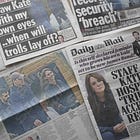

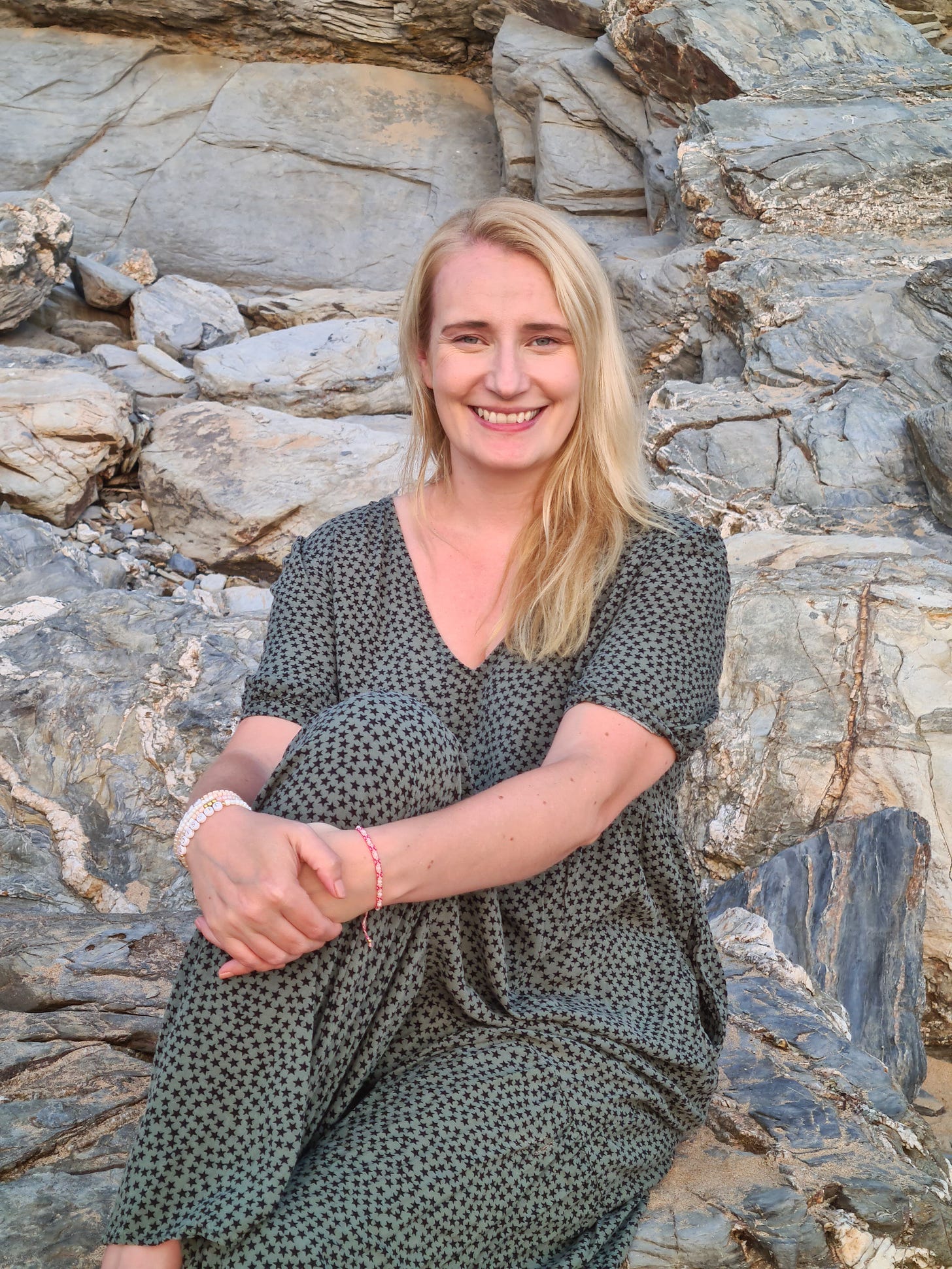
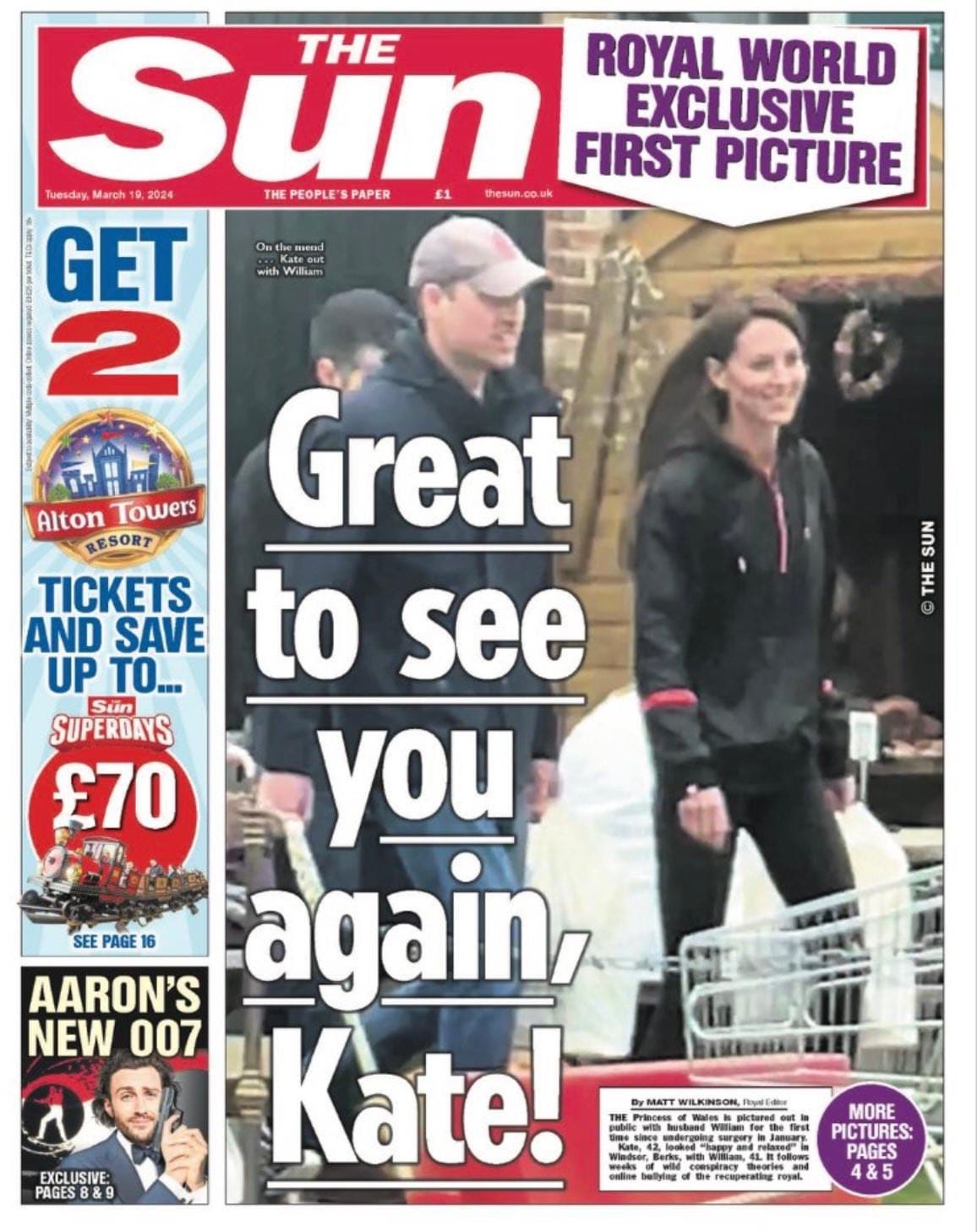



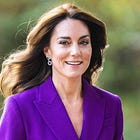

You only have to be on Twitter for a minute before you see every British publication printing a headline about Kate to know that 'privacy' is not what they want for Kate. What they want is privacy from the Internet and social media so they can remain the lead sources that make money. And I think that is really the lesson the Royal Family should take: they need to update their PR plan to take into account the way the world processes information now.
And not touched here is if they aren't writing about Kate they are writing about Meghan and Harry in relation to Kate: should they come back, they need to make up, etc. Kate is allowed privacy that Meghan was not (I know Elizabeth has talked about this before).
This is such a sticky situation, and so difficult to navigate. I appreciate the perspective here.
It’s not possible to fit every piece of context into one article, but I do think that the speed at which the conversation on social media turned toward extremely dark/violent conspiracies is indicative of a true PR problem for the BRF. People - especially women - have zero trust in any public institution to protect them or other women, and that goes double for a family with a well-known history of questionable (at best.) treatment of the women who marry in. It feels like women are exposed and vulnerable everywhere, and that makes it really easy to believe that the public “needs” to bring light to a potentially dangerous situation. (I’m not saying that accounts for all of the sordid gossip-mongering, but I do believe it accounts for a large part of the online discourse). Imagine if a female public figure like Beyoncé or Michelle Obama had issued the same statement as the January statement. There simply would not have been the same outcry because these women are not a part of an institution that a lot of people are VERY quick to believe is capable of victimizing vulnerable people/women. To me, the darkness and the speed at which we arrived there are belying a lot of very negative underlying feelings in the USA toward this institution.
Also - Look at the Free Britney situation. A vulnerable woman with a large public following “disappeared” and now directly cites the alarm bells raised by fans as leading to an improvement in her situation. The public gaze is not merely a lamentable reality in 2024; it’s an overcorrection of one thousand years of women suffering in invisibility. It’s understandable to me, though complicated.
None of this makes it okay for Catherine to have to suffer public scrutiny in this way, and I feel so much for her and her children. Her statement was incredibly poignant and brave and I hope they’ll be left in peace for as long as she desires.